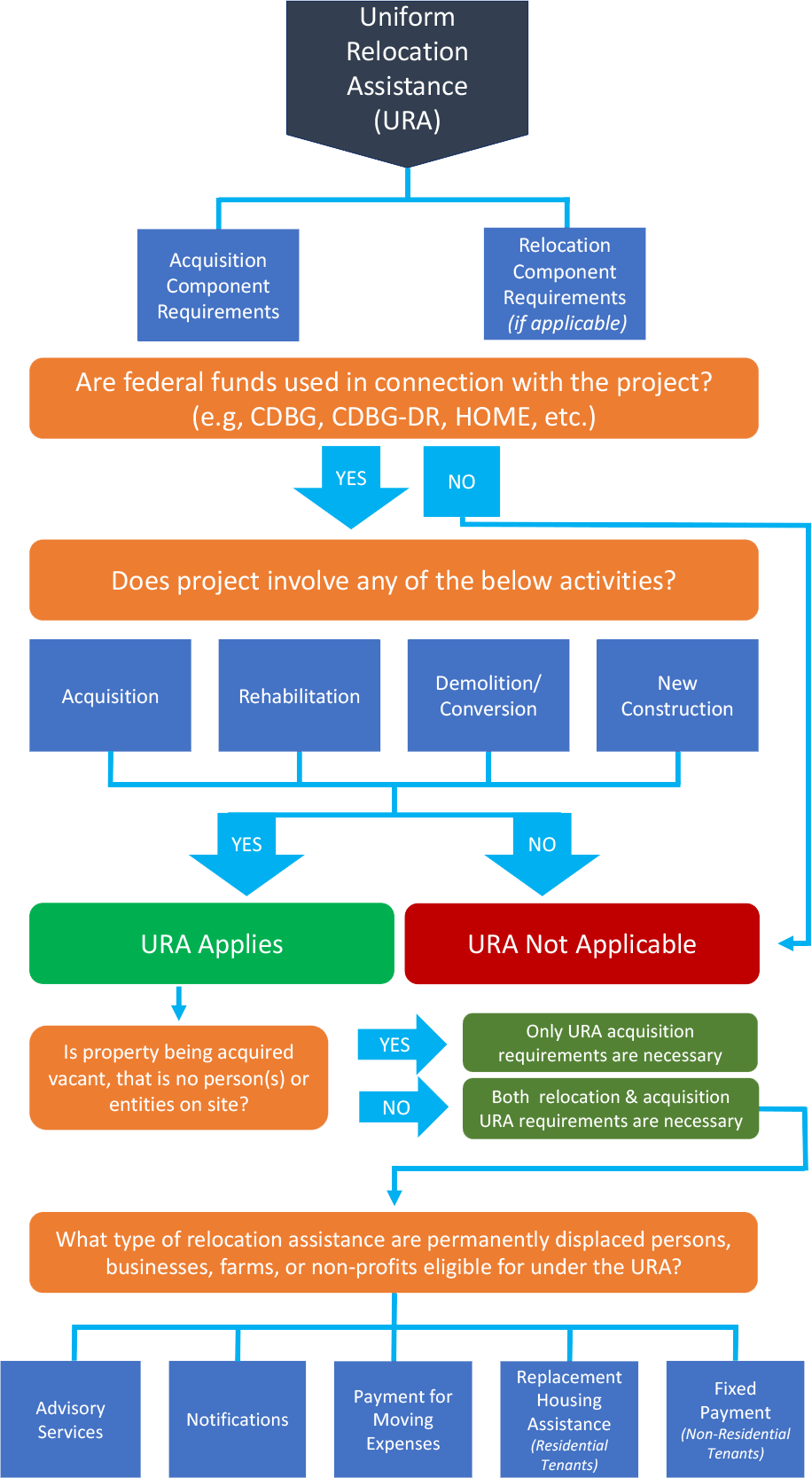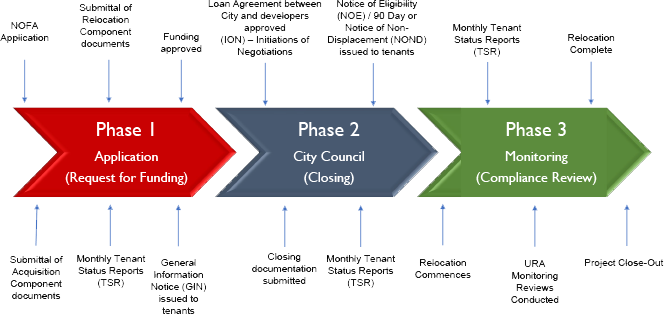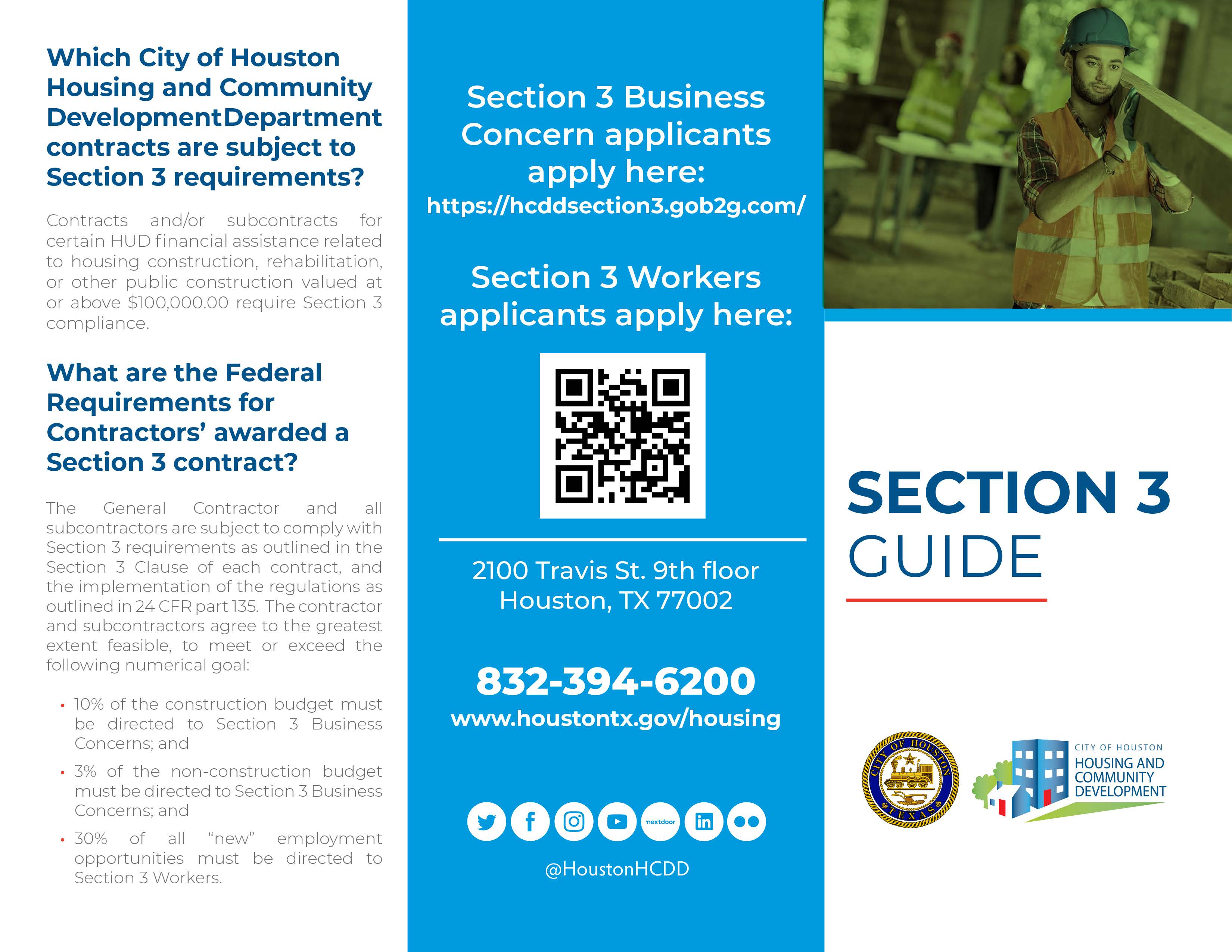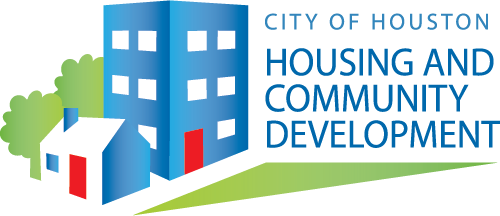Compliance With Program Rules
What is Compliance?
Compliance encompasses the conscientious effort to meet and exceed the prescribed guidelines to mitigate risks and foster a culture of integrity, accountability, and transparency. Collaboration with contractors and partners ensures the overall success of developing viable communities.
Our compliance professionals are committed to providing practical guidance, performance monitoring, and effective resources to help partners meet requirements. This section discusses program rules, compliance requirements, management systems, training materials, and much more.
COMPLIANCE REQUIREMENTS
Building Standards
All projects completed by City of Houston Contractors must meet the standards of the relevant program.
Davis Bacon and Related Acts
The Davis-Bacon and Related Acts apply to contractors and subcontractors performing on federally funded or assisted contracts in excess of $2,000 for the construction, alteration, or repair (including painting and decorating) of public buildings or public works. Davis-Bacon Act and Related Acts contractors and subcontractors must pay their laborers and mechanics employed under the contract no less than the locally prevailing wages and fringe benefits for corresponding work on similar projects in the area.
HCD Policies
Required Forms
Resources
Environmental Review
In order to receive federal funding, all projects must go through a thorough evaluation to assess their potential impact on the environment. This evaluation ensures that the project adheres to environmental standards set by federal, state, and local authorities and that it will not harm the surrounding environment or the health of those who will use it. The responsibility of conducting this evaluation lies with an HCD Environmental Review Officer.
Throughout the evaluation process, certain conditions may be identified that need to be met to comply with local, state, and federal requirements. These conditions, known as environmental mitigation measures, are necessary to address any potential environmental issues.
Under no circumstances can any funds be allocated to a HUD-related project that may have a negative impact on the environment or restrict the availability of reasonable alternatives. This ensures that all federally funded projects prioritize environmental sustainability and consider the best interests of the community and its surroundings.
From September 2022, agencies that do not receive direct Department funding for their project/program will be subject to a fee for the Environmental Review process. This fee will be determined by the number of hours dedicated by HCD staff to finalize the review. Once the review is finished, an invoice will be issued for payment.
For additional information, you may contact our team at hcdenvironmental@houstontx.gov.
Resources
- 24 CFR Part 58 Environmental Review Procedures for Entities Assuming HUD Environmental Responsibilities
- HUD Environmental Review Resources
- HUD Tiered Environmental Reviews Guidance
- HUD Web-Based Instructional System for Environmental Review
- Texas DSHS Asbestos Remediation Regulations
- HUD Lead Abatement Guidance
- Choice Limiting Actions
MWSBE Hiring
Most projects funded by HCD will also require compliance with Section 3 and Minority- and Women-Owned Small Business Enterprises (MWSBEs).
HCD Policies
Required Forms
Resources
Pay or Play Program
The Pay or Play Program policy applies to all contracts that exceed $100,000 and/or all subcontracts that exceed $200,000 throughout the life of the contract.
The POP Program does not apply to:
- Any contract in which the primary purpose (51% or more) is the procurement or purchase of property, leases, goods, supplies, and/or equipment;
- 4.2.2. An intergovernmental contract, interlocal agreement, bulk purchasing or purchasing cooperative.
- 4.2.3. Any contract for which the City of Houston has not expended funds, regardless of funding source.
All employees over the age of 18 who work at least 30 hours per week or any amount of time under a covered City contract or sub-contract.
Pay or Play Options
PLAY
Each covered employee must be given health insurance coverage that meets the following standards:
- The employer contributes no less than 75% of the total premium costs per covered employee per month toward the total premium cost; and
- The covered employee contributes, if any amount, no greater than 25% of the total monthly premium costs.
PAY
- The contractor will have to submit workforce audits in B2GNow (https://houston.mwdbe.com/ ) that list all PAY employees' total work hours for the firm and the total hours they work each week on the City of Houston contract.
- A fee of $1 will be assessed to the employer for each hour over 30 hours that covered employees' work until contract completion. POP invoices are generated via the B2GNow website and sent to the email address listed in the vendor's profile. Invoice payments are due within 30 days of receipt via the Chase Payment Portal in B2GNow. Checks or ACH Deposit payments are no longer accepted. For payment instructions or clarity, contact HCD Pay or Play Coordinators LaQuinta Burton or Leslie Joseph at 832-393-6200.
Pay and Play
A contractor may PAY on behalf of some covered employees and PLAY on behalf of other covered employees, including subcontractors' covered employees.
EXEMPTION
There are several means for an employee to be considered exempt from the POP program, including:
- Under the age of 18
- Has insurance through their spouse
- Has Medicaid/Medicare
- Refuses Health Insurance from their employer that meets City of Houston Requirements.
- For each exempt employee, a POP-8 form must be filled out, and supporting documentation/ acceptable proof of insurance is required. The POP-8 forms should be signed, notarized, and completed by the employee.
A full list of required documents for the Pay or Play program are available on the City of Houston's Office of Business Opportunity’s website .
Department-Specific Guides:
For more information, contact the department’s Pay or Play Coordinators, LaQuinta Burton or Leslie Joseph, at 832-393-6200.
Property Managers
Funding from the Department comes on the condition that the development remain affordable for periods up to 40 years. In addition, the development must comply with federal standards. Our inspectors conduct onsite monitoring annually to check accuracy of rent and occupancy reports, review onsite records, and inspect units.
Department-Specific Guides:
Depending on the source that funded the project, different additional requirements go into effect.
Section 3
The Section 3 program requires that recipients of certain HUD financial assistance, to the greatest extent possible, provide training, employment, contracting and other economic opportunities to low- and very low-income persons, especially recipients of government assistance for housing, and to businesses that provide economic opportunities to low- and very low-income persons.
Information for Section 3
Questions?
Contact a Section 3 representative at hcdsection3@houstontx.gov for assistance, or call our hotline at 832-394-6257
Information for Workers
A Section 3 Worker is any individual who currently fits, or when hired within the past five (5) years fits, at least one of the following categories:
- The worker’s income for the previous or current calendar year is below HUD income limits (Español) ; or
- The worker is employed by a Section 3 Business Concern; or
- The worker is a YouthBuild participant.
For more details, please refer to the Section 3 Worker Application Checklist and FAQs (Español ). For questions, call 832-394-6257 or email HCDSection3@houstontx.gov
Information for Businesses
Businesses can apply for Section 3 certification if they are:
- 51% owned and controlled by low-income person(s); or
- 75% of business labor hours are performed by low-income persons; or
- 51% owned and controlled by current public housing residents or residents who currently live in Section 8 assisted housing
If you are interested in receiving Section 3 Certification for your business, get started in the Section 3 Management System . In addition to the main application, you will need to provide documentation about your business. You can find a full list of required documents on the Business Concerns Application Checklist (Español ).
HCD Policies
Required Forms
Resources
Additional Resources
| Document Name | Applicable to | Last Updated | View |
|---|---|---|---|
| Section 3 Business Directory | Section 3 Workers | View | |
| Worker Application | Section 3 Workers | 04/10/2025 | |
| Worker Directory | Section 3 Workers | 03/19/2025 | View |
| Section 3 Worker Application Checklist and FAQs | Section 3 Workers | 02/11/2025 | |
| Section 3 Brochure | Section 3 Workers | 06/15/2022 |
Single-Family Loan Servicing
Participants in our Single-Family programs, including our Home Repair programs and our Homebuyer Assistance Program, must comply with the affordability period specified in their contracts. Some types of assistance include a loan on the property for a duration outlined in their contract.
To fulfill the terms of the contract, the homeowner must live in the home for the entire affordability period without selling, leasing, or transferring ownership of the property. At that point, a Release of Lien can be started.
In the case that the homeowner decides to break the terms of the affordability period, they will need to repay the City some or all of their loan. For questions, please call our Loan Servicing hotline: 832.394.6140 or email us directly: HCDDLoanServicing@houstontx.gov.
Forms needed to be released from the loan can be found below:
| Document Name | Description | Download |
|---|---|---|
| Release of Lien Request | Form for requesting a release from the City’s loan on the property, either at the end of the affordability period or when choosing to repay the City before the end of the affordability period. | View |
| Payoff Statement Request | Form to ask for payoff statement before the end of the affordability period. | View |
| Subordination Agreement Request | Form to use when changing terms of mortgage. | View |
Uniform Relocation Act
All federally funded projects administered by HCD must comply with the Uniform Relocation Assistance and Real Property Acquisition Policies Act of 1970, as amended (URA). The URA is applicable in cases where land acquisition, demotion, rehabilitation, and conversion of properties requires temporary relocation or permanent displacement of persons, businesses, farms, or non-profits.
Developers, agencies, and program staff should refer to our:
- Uniform Relocation Assistance and Real Property Acquisition Act of 1970, as amended URA Policy
- Residential Anti-Displacement & Relocation Assistance Plan (RARAP)
For information and resources about the URA, please refer to the following tables:
URA Applicability Flow Chart & Fact Sheets
Acquisition and relocation activities require URA documentation. Some projects are acquisition only, involving vacant land or property with unoccupied structures. This type of project requires a minimal amount of URA compliance documentation. Projects involving the relocation of residential or nonresidential tenants require additional documentation.

General URA Project Timeline

Acquisition
Relocation
HUD Information Brochures
Federal Standards and Resources
URA Microlearning Modules
Frequently Asked Questions (FAQs)
Q: What is the URA? - Answer
A: The URA is defined as the Uniform Relocation and Real Property Acquisition Policies Act of 1970, as amended. URA applies to acquisitions of real property or displacements of persons resulting from Federal or federally assisted (in whole or in part) programs or projects.
Q: What is a Program or Project? - Answer
A: An activity or series of activities undertaken with federal financial assistance received or anticipated in any phase. When federal financial assistance is used for any activity or in any phase of a project, planned or intended, and the activities are determined to be interdepended, the statutory and regulatory requirements of the URA and the specific HUD funding source(s) are applicable. Interdependence is best determined by whether one activity would be carried out if not for another. As a result, any activity in connection with a federally funded project can be subject to all regulations of that funding source even though the activity may not be directly funded by that source. HUD projects are defined according to the program rules.
Q: What are the URA triggering activities and does the URA apply to local agencies or third parties? - Answer
A: The URA applies to any local or third parties that will use Federal or federally assisted funds in connection with an acquisition, rehabilitation, reconstruction, or demolition. Local and third parties would be responsible for ensuring the implementation and compliance of the URA.
Q: Who is eligible to receive assistance under the URA? - Answer
A: Eligible persons include displaced tenants and homeowner occupants who participate in a program or project in an involuntary manner. Homeowner occupants who “voluntary” sell, rehabilitate, or demolish property are not eligible to receive assistance under the URA. Eligible tenants include both residential and non-residential (businesses, nonprofits, and farms) tenants.
Q: What assistance are displaced persons eligible to receive? - Answer
A: Tenants are entitled to receive advisory services which include referrals to comparable locations and payment for moving expenses. Residential tenants are also eligible to receive Replacement Housing Payments (RHP) where they can choose to either receive rental assistance or purchase assistance on a replacement home. Non-residential tenants are eligible to receive reestablishment expenses or receive a fixed payment (“In Lieu Of” Payment) as an alternative.
Q: How will having documented & undocumented residents affect relocation assistance eligibility? - Answer
A: No relocation assistance shall be provided to a person who has been determined to be not lawfully present in the United States, unless such person can demonstrate that the denial of relocation assistance will result in an exceptional and extremely unusual hardship to such persons spouse, parent, or child who is a citizen of the United States , or is an alien lawfully admitted for permanent residence in the United States.
Q: What is the meaning of the term “exceptional and extremely unusual hardship”? - Answer
A: The final rule includes a definition of the phrase “exceptional and extremely unusual hardship,” which focuses on significant and demonstrable impacts on health, safety, or family cohesion. This phrase is intended to allow judgement on the part of the displacing agency and does not lend itself to an absolute standard applicable in all situations.
Q: Are there limits to the amount of Replacement Housing Payments (RHP) that eligible renters can receive and what is Housing of Last Resort? - Answer
A: Although the URA regulations specify that displaced persons who rent a replacement dwelling are entitled to a payment not to exceed $7,200 for rental assistance, that is not a cap. It is often necessary to exceed the $7,200 threshold in order to re-house a displaced person. Where comparable replacement housing is not available within the monetary limits for RHPs, Housing of Last Resort must be offered. The last resort housing provisions give Agencies broad latitude in how they make housing available. Providing additional financial assistance above the threshold to make the comparable unit within the person’s financial means is often the most feasible housing of last resort option.
Q: What are other methods of providing Housing of Last Resort? - Answer
A: Different methods of Housing of Last Resort include but are not limited to providing payments in excess of the applicable RHP monetary limits, direct provision of loans, construction of new replacement dwelling, moving and/ or rehabilitating a replacement dwelling, or removal of barriers for persons with disabilities. Estimating the cost of these methods would require evaluation on a case-by-case basis.
Q: What is excluded from household income when calculating the replacement housing payment for tenants? - Answer
A: Household income does not include income received or earned by dependent children or full-time students under 18 years old. However, full-time students over 18 may be assumed to be a dependent, unless the person demonstrates otherwise. It also does not include benefits that are not considered income by Federal law, such as food stamps, or the Women Infants and Children (WIC) program. For a more detailed list of income exclusions, see Federally Mandated Exclusions from Income under Real Estate Topics of Special Interest on: https://www.fhwa.dot.gov/real_estate/uniform_act/relocation/exclusions.cfm .
Q: What if there are multiple occupants of one displacement dwelling? - Answer
A: In general, all of the occupants of a single dwelling unit should be considered one family for purposes of payment calculations. However, two or more occupants of a dwelling may maintain separate households within that dwelling. If they do, they have separate entitlement to relocation payments. The Agency is responsible for determining the number of households in a dwelling based on the use of the dwelling, the relationship of the occupants, and any other information that may be obtained. The payment computation for each household should be based on the part of the dwelling that the household occupies and the space that is shared with others. An attempt should be made to locate similar comparable DSS living facilities. The record should be sufficiently documented to support the decision reached.
Q: Can expectant children count as part of the displacing household? - Answer
A: The URA regulations do not specify if children expected to be born to pregnant women are included as members of the household. It would be up to the local program to develop and follow policies to address this issue, but it would be reasonable to anticipate imminent changes in family composition.
Q: What are the requirements for temporary relocation? - Answer
A: Sometimes a project may require persons to be relocated from their dwellings for only a short period of time. Although temporarily relocated persons do not receive the same relocation assistance and payments as persons permanently displaced under the URA, they do have certain rights and protections. Temporary relocation should not extend beyond one year before the person is returned to his or her previous unit or location. Residential tenants must be reimbursed for all reasonable out-of-pocket expenses, moving expenses, and increased housing costs that are incurred in connection with the temporary relocation. Residential tenants who are temporarily relocated for a period beyond one year must be contacted and offered permanent relocation assistance. These expenses are in addition to any assistance a tenant has already received for temporary relocation; and may not be reduced by the amount of any temporary relocation assistance.
Q: Can an owner of a property to be acquired prevent the agency from contacting tenants of the property? - Answer
A: An owner may not prevent authorized agency employees from notifying tenants of the benefits they may be eligible to receive under the Uniform Act. The agency should advise the owner that it is better to explain to the tenants the requirements and obligations for the eligibility for benefits and to advise them there is no rush to relocate. In situations where the owner is concerned the tenants will move and there will be loss of rental income, the agency may offer to make a payment to replace lost rent for vacancies occurring due to relocation for a reasonable period of time.
Q: Does lack of cooperation on the part of the displaced person relieve the agency of its obligation to provide required relocation advisory assistance? - Answer
A: The agency must provide notices and advisory services to all displaced persons. All contacts and efforts to contact a displaced person must be documented in the agency files. The agency is not relieved of its responsibility regardless of cooperation. In some cases, the relocation agent should seek advice early in process from legal counsel.
Q: Will the purchase and occupancy of a motor home or a boat meet the requirements for a purchase of a replacement dwelling? - Answer
A: A motor home or a boat capable of providing living accommodations may be considered a replacement dwelling if (a) the motor home or boat is purchased and occupied as the primary place of residence; (b) the motor home or boat is located on a purchased or leased site and connected to all necessary utilities for functioning as a housing unit on the date of the agency's inspection, and (c) the dwelling, as sited, meets all local, State, and Federal requirements for a DSS dwelling. It should be noted that the regulations of some local jurisdictions would not permit the consideration of these vehicles as DSS dwellings. A motor home or a boat designed to provide living accommodations may also meet the requirement of a rental replacement dwelling if it is occupied as the primary place of residence and qualifies under (b) and (c) above.
Q: If a business being permanently displaced decides to go out of business, what payment option is most suitable? - Answer
A: The fixed payment is a useful option for businesses which may choose to go out of business because of relocation. It helps reduce the administrative burden for both the displaced business and the agency, since no documentation of actual moving or reestablishment expenses is required.
Q: If someone received CDBG rehabilitation assistance, can they come back and receive additional CDBG-assisted rehabilitation funding? - Answer
A: CDBG-funds may be used more than once to rehabilitate the same housing structure. This may be necessary because the work was not performed satisfactorily the first time or there is a different problem that needs resolution. There is no time limit. If years have passed, the household should be income qualified again to ensure that the low/moderate income housing national objective is met.
If you have any questions concerning URA, please contact our URA section by calling 832-394-6200 to be connected to a staff member, or by emailing HCD-URA@houstontx.gov.

